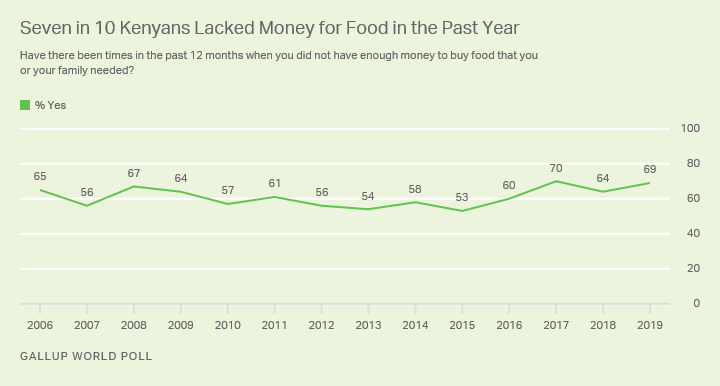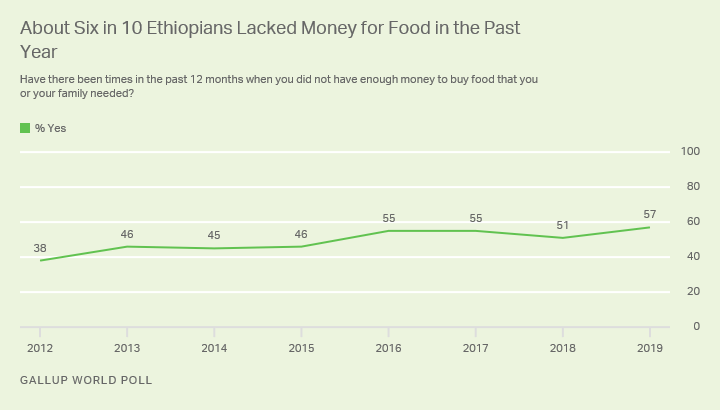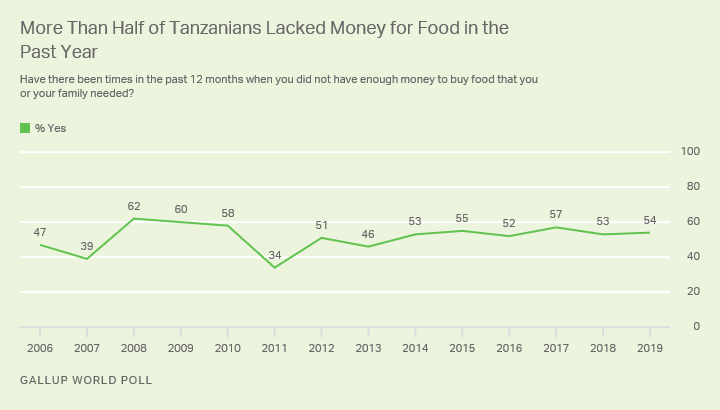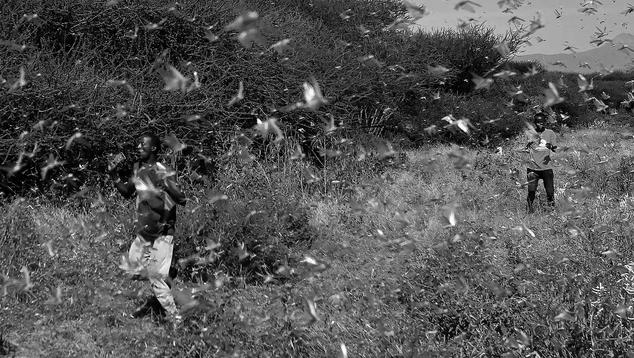Story Highlights
- Seven in 10 Kenyans lacked money for food at times in the past year
- Almost six in 10 Ethiopians lacked money for food in the past 12 months
WASHINGTON, D.C. -- In the past month, large swarms of locusts have devastated crops across large swaths of East Africa, threatening the livelihoods and the food supply of millions who were already struggling to afford food before the locust invasions. While swarms have been spotted in 10 countries, places such as Kenya and Ethiopia -- where the majority of residents say they could not afford food at times in the past year -- have been among the hardest hit.
Although aid agencies are working with local governments to combat the locusts, they currently lack the equipment and funding they need, and amid the COVID-19 outbreak, experts can no longer travel to countries to help train the local communities to fight the spread of the pests. This poses tremendous risk for the communities affected, not only in Africa but also the Middle East, where the locusts are expected to spread in the next month.

Food security in Kenya was already at risk in 2019 from drought conditions in some parts of the country and excessive amounts of rain in other areas. Before the locust plague that is devastating Kenya's farmland, Gallup's surveys in 2019 found nearly seven in 10 (69%) saying that they had been unable to afford the food their families needed at times in the past year.
This is essentially equal to the record-high 70% who said the same in 2017. Over the course of Gallup World Poll trends since 2006, no less than 53% of Kenyans have said they struggled to afford food.
Struggles to Afford Food Widespread in Ethiopia as Well
The percentage of Ethiopians struggling to afford food has generally risen since the question was first asked as part of the World Poll in the country in 2012. The current 57% of Ethiopians who say they have lacked money for food in the past year is similar to the 55% who reported the same in 2016 and 2017.
Internal conflict within the country that has affected farming in some areas and displaced an estimated 2 to 3 million Ethiopians has exacerbated Ethiopians' struggles to afford the food they need.

Uganda and Tanzania at Risk as Well
While farmland has already been devastated in Kenya and Ethiopia, locusts have also reportedly crossed into the East African countries of Uganda and Tanzania. In both of these countries, high percentages of their populations reported that they lacked money for food in the past year.

In 2019, about two in three Ugandans said they could not afford food at times in the past year. Heavy rainfall in areas of Uganda in 2019 disrupted agriculture and infrastructure, further adding to residents' difficulties in affording food.

In 2019, a slim majority of Tanzanians (54%) said they lacked money for food in the past 12 months. This is largely similar to the levels seen in the country since 2012.
Bottom Line
Much of the population in several East African countries was already struggling to afford food before the recent swarms of locusts in the region. This has been exacerbated over the past several years in East Africa because of extreme weather and internal conflict. Locust swarms have devastated farmland in Kenya and Ethiopia at the worst possible time, and similar levels of devastation may occur in Uganda and Tanzania -- and elsewhere across Africa and the Middle East.
The United Nations Food and Agriculture Organization has already begun coordinating efforts with governments in the region to employ pesticides against the swarms. However, as of early February of this year, the effort had not yet received sufficient donations to cover its costs. Even if this effort is fully funded and successfully eradicates the locust swarms, substantial damage has been done to crops in the region, and large-scale international food aid will likely be required to avert famine there. But getting aid to the region will prove even more difficult with the spread of COVID-19.
For complete methodology and specific survey dates, please review Gallup's Country Data Set details.
Learn more about how the Gallup World Poll works.




